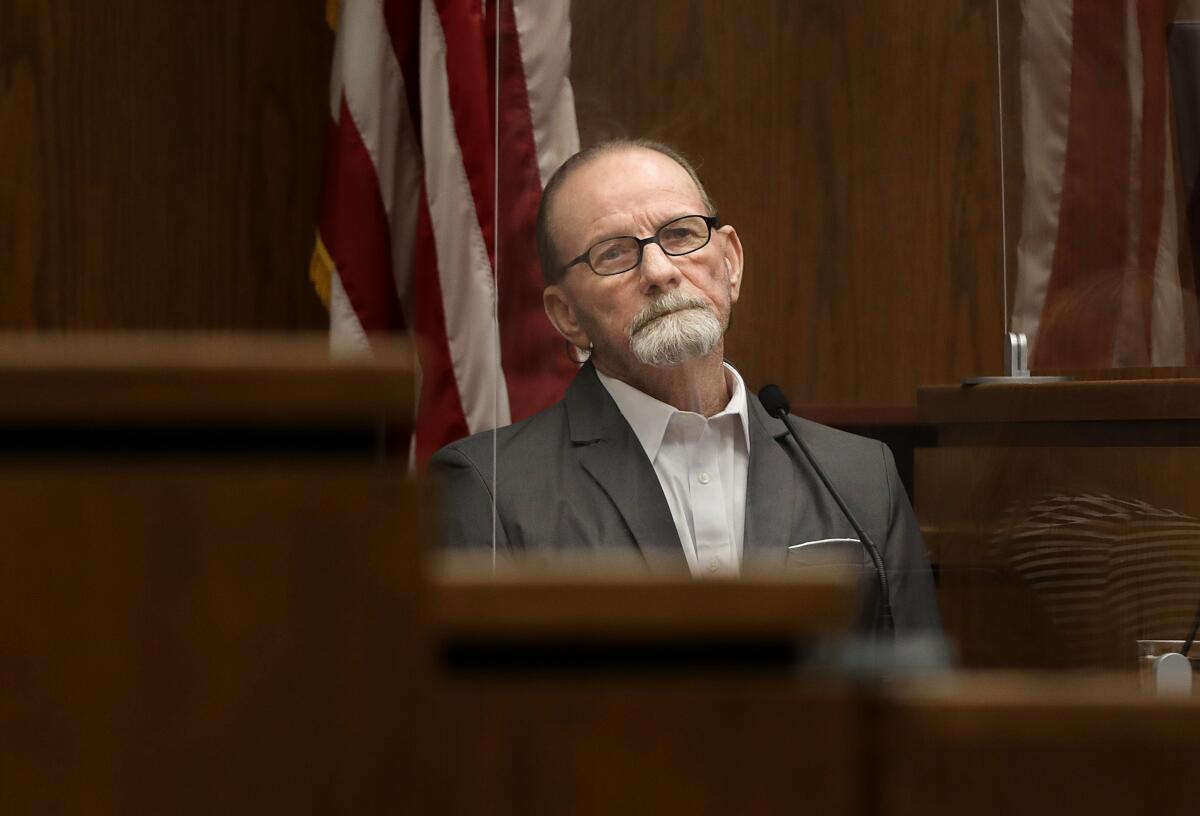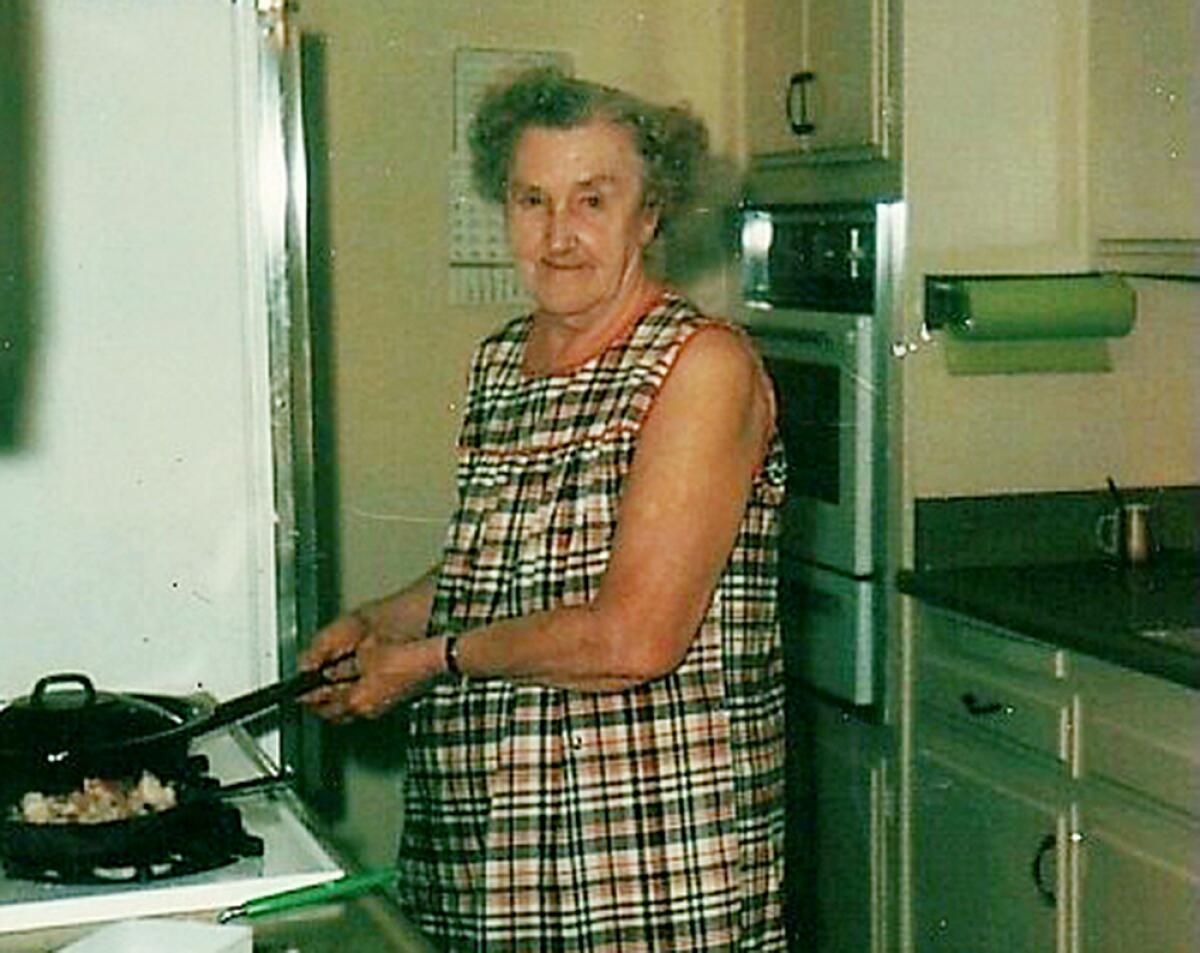DNA leads to murder conviction in 1980 killing of 79-year-old Anaheim woman

- Share via
Viola Hagenkord was 79 and lived alone in her small Anaheim apartment. She was known to prop open her front door with a Campbell’s soup can in the evenings, a habit that made some neighbors worry for her. On Feb. 18, 1980, she was found slain in her bed, asphyxiated with a gag made from a torn pillowcase. She had been raped.
In one of Anaheim’s oldest cold-case murder prosecutions, an Orange County Superior Court jury on Tuesday convicted a former long-haul trucker, Andre Lepere, of her murder. Lepere, 64, had been living in retirement in Alamogordo, N.M., when he was arrested last year, linked to the crime by evolving DNA technology.
After a two-week trial, the jury began deliberations Friday and resumed Tuesday morning, announcing midmorning it had reached a verdict. Convicted of murder with the special circumstance of rape, Lepere faces an automatic life term when he is sentenced May 13 by Superior Court Judge Gregg Prickett.
At the time of the attack, Lepere was 22, a heavy beer drinker who had lasted only a year in the Army before misbehavior — including an alcohol-related car crash — prompted his discharge. He was estranged from his first wife, who had once filed a restraining order against him.
Now and then, Lepere stayed on his sister Denise’s couch at the Pebble Cove Apartments in Anaheim.

Hagenkord lived a few doors away, in a ground-floor apartment. A local high school girl called her “Grandma” and brought her cookies and described her as “very sweet.” Hagenkord had worked at a department store in Milwaukee and moved to Southern California in the late 1970s hoping to get away from crime.
Confronted with the DNA results in court, Lepere did not dispute that it was his semen found in Hagenkord’s body, but he denied raping or killing her. Testifying in his own defense, his thinning hair tied into a ponytail with a rubber band, he said that he and Hagenkord twice had casual, consensual sex, and that she was alive when he left her.
“I was 22,” Lepere said. “I had lots of women that used to take a shine to me.”
At a meeting of prosecutors, Spitzer allegedly said he knows “many black people who get themselves out of their bad circumstances and bad situations by only dating white women.”
Prosecutor Christopher Alex ridiculed Lepere’s “ridiculous” claim that another man raped and killed Hagenkord on the same day and in the same bed that Lepere admitted having sex with her, the phantom culprit leaving no detectable semen of his own. This amounted to “the most incredible string of coincidences that could ever befall an innocent man,” Alex said.
Lepere, who had worked as a trucker, plumber and mason, said he was shocked to learn of her murder but decided not to approach police because he didn’t know anything.
The case was cold for decades until Anaheim detectives asked the Orange County crime lab to reexamine the evidence using modern DNA methods in 2020.
The lab developed a DNA profile that was eventually linked to Lepere, whose DNA had not been in law enforcement databases, through genetic genealogy methods.
“He escaped detection for 40 years,” Alex told jurors. “Were it not for DNA, he would have escaped forever.”
Alex portrayed Lepere’s account as absurd and self-serving, at odds with common sense and what was known of the victim’s character. According to her granddaughter, Hagenkord had divorced a husband in 1928 and had shown no interest in men afterward.
“She never dated after that at all,” the granddaughter, Janet Black, testified. “She was done.”
Alex said Lepere’s account of being seduced by the victim was “like something out of a stupid fake letter to Penthouse.”
During the trial, defense attorney Lee Stonum argued that “in the 42 years since this crime, Mr. Lepere has lived a normal, hardworking life full of love,” adding: “It just doesn’t fit with the kind of person who would do this.”
Stonum said that Lepere became a “jackass” when he drank, but that didn’t make him a killer. He pointed to character witnesses, including the girlfriend living with Lepere at the time of his arrest last year, who did not think he was capable of the crime.
Stonum said there was unidentified male DNA on the pillowcase gag, which a crime lab analyst testified did not belong to Lepere.
Alex told jurors that the unidentified DNA could have appeared on the pillowcase in a number of ways — when Hagenkord took it to the laundry, or when someone touched it while processing the evidence in 1980, when crime scene protocols were less stringent.
More to Read
Sign up for Essential California
The most important California stories and recommendations in your inbox every morning.
You may occasionally receive promotional content from the Los Angeles Times.














